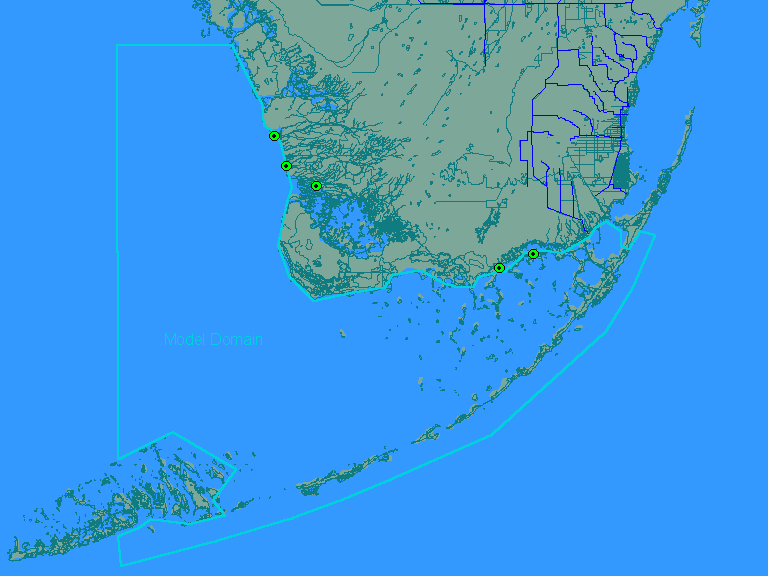Estimation of Inputs to Florida Bayprepared forU.S. Army Corps of Engineers & U.S. Department of the InteriorbyWilliam W. Walker, Jr., Ph.D., Environmental EngineerJuly 1998Introduction | Methods | Report Sections | References | Appendices | Data Needs | Related Links | E-Mail |
||||||||||||||||
|
This report describes the development of input flow and load data sets to drive a water quality model of Florida Bay being developed by the U.S. Army Corps of Engineers, Waterways Experiment Station (Dortch et al, 1997). This site has been established to communicate interim results and facilitate project review. Please provide comments to W.W. Walker. The objective of the project is to develop estimates of flow and loads of nutrients and other water-quality consituents entering the region from the Florida mainland, Keys, and atmosphere. The spatial scale is reflected by the model domain shown below:
The project is being conducted in two phases. In the first phase, preliminary estimates have been developed for sources in the following categories:
Other potential sources (e.g., rookeries, inputs from the Flamingo Visitor Center) may exist but have been ignored in the initial estimates. Inputs are estimated on a monthly time scale for the period from October 1986 through December 1997. A number of potential refinements have been identified in the process of developing these estimates. Depending upon results of model sensitivity testing, some or all of these refinements may be implemented in a second phase of the project. Water quality components of interest include (Dortch et al, 1997):
Since this list is considerably longer and more detailed than the list of water quality components that are typically measured, numerous assumptions regarding concentration and/or speciation will have to be made in order to estimate loads. These and other assumptions made in developing the input data sets will be clearly defined and software will be provided to generate flow and load time series for alternative sets of assumptions. The following table summarizes general strategies used to estimate flows and loads for each source:
Some of the above information has already been requested from various people. Send comments or questions to W. Walker via e-mail. Send data files to the following anonymous FTP site: ftp.dep.state.fl.us/pub/incoming/www/flabay. Send reports or other printed material to: W. Walker, 1127 Lowell Road, Concord MA 01742. Phone 978-369-4230. Fax 978-369-4230. Direct questions on the Bay water quality modeling effort to Mark Dortch. Thanks.
http://www.wwwalker.net/flabay/index.htm Updated: 03/30/02 |
